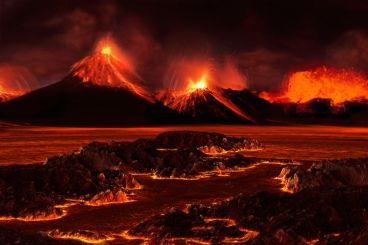The key to the puzzle would come from a totally unexpected quarter.
解谜的密钥来自一个出人意料的地方。
Gerry Dickens is a geologist working on new sources of energy.
Gerry Dickens是一位研究能源开采的地质学家。
He had no special interest in the Permian extinction,
他对二叠纪生物大灭绝没有太大兴趣,
but one evening, sitting in a bar, he ran into a friend.
一天晚上他在酒吧里遇到了一位朋友。
We were just sort of chatting about what we were working on for the summer,
我们谈论着我们整个夏天都在忙些什么,
and he was telling me that he was working on trying to understand how you could get massive of 12 carbon quickly
他告诉我,他正在研究碳-12的数量为什么会迅速增长,
because some signatures had been found in the rock records,
因为岩石记录中出现了这些标记,
and it was very difficult to explain, it didn't make any sense.
这很难解释,他感到莫名其妙。

Dickens was curious. Several years earlier, he'd spent time on a drilling rig in the Gulf of Mexico,
Dickens对此很好奇。多年前他曾去过墨西哥湾的一个钻井平台,
prospecting for a new source of energy called methane hydrate.
勘测一种新型能源叫做甲烷水合物。
It's a gas frozen in huge reservoirs just below the seabed.
这是一种大量封冻在海底的气体。
Dickens knew this methane contained massive quantities of carbon 12.
Dickens知道这些甲烷含有大量碳-12。
He also knew there were dozens of these methane hydrate reservoirs scattered around the world's coasts.
他也知道全世界沿岸地区都分布着这些甲烷水合物储层。
We find 'em for instance along the coast of south America, along central America,
我们可以在这些地方找到它们:南美洲,中美洲沿岸,
all along the western coast of the US and Canada, indications round Australia, Indonesia,
美国西海岸,加拿大沿岸,澳大利亚沿岸,印度尼西亚沿岸,
essentially anywhere along continental margins where you get a lot of organic matter that decays at the bottom and produces methane.
实际上所有大陆架边缘地带的海底都有大量腐烂的有机物在释放甲烷。



